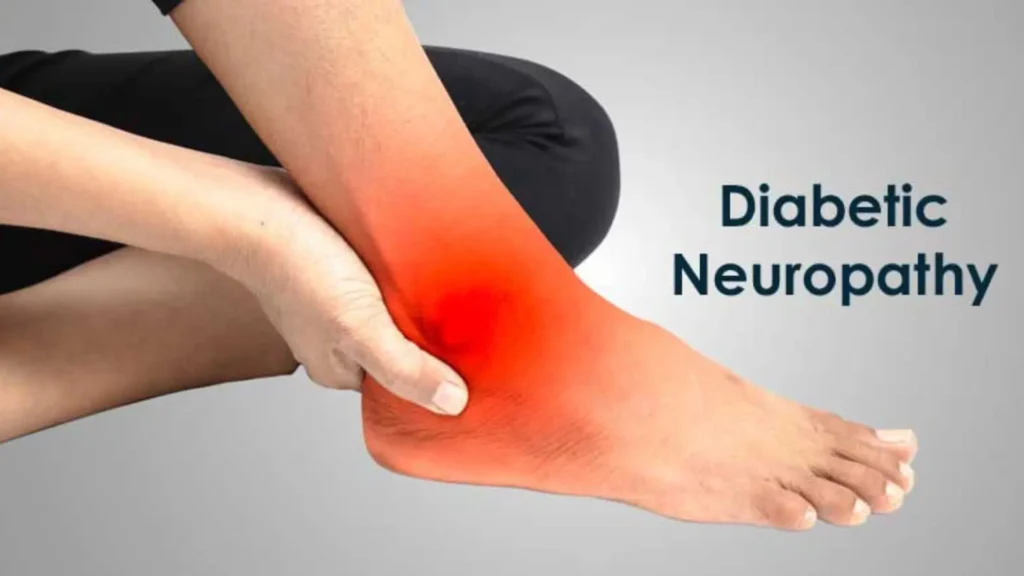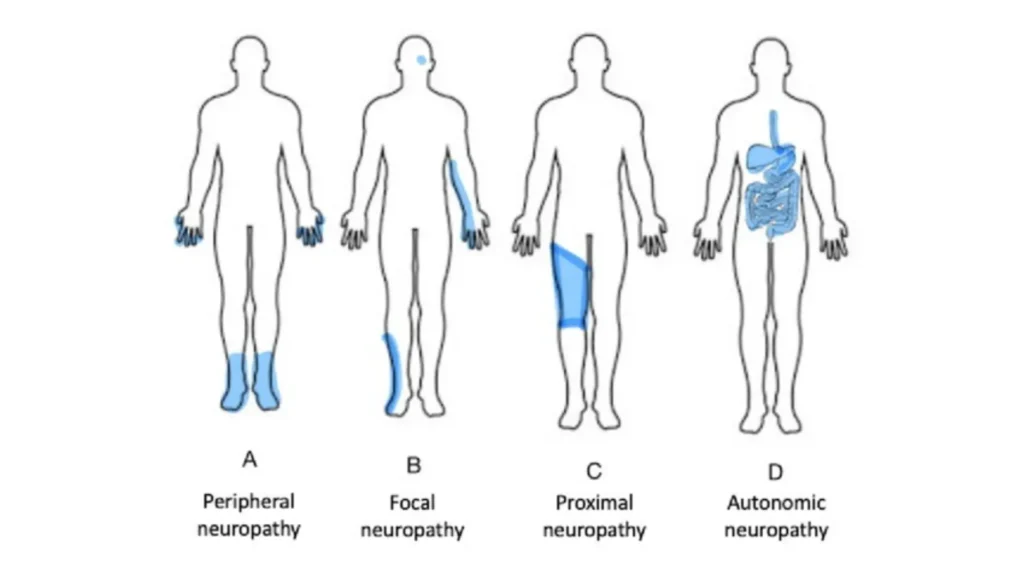Early detection of diabetic neuropathy symptoms can save your health, or even life!

Diabetes doesn’t just affect your blood sugar—it can silently damage your nerves, often before you even realize something’s wrong. This condition, known as diabetic neuropathy, develops gradually and can be difficult to detect in its earliest stages. Diabetic neuropathy affects up to 50% of people with diabetes, and yet many go undiagnosed until symptoms become painful, debilitating, or even life-threatening.
The sooner you spot diabetic neuropathy symptoms, the more control you have over your health, your mobility, and your long-term quality of life. Let’s explore how to spot diabetic neuropathy symptoms early now—before it’s too late.
What You Need to Know About Diabetic Neuropathy
It's important to understand diabetic neuropathy to manage its symptoms and prevent more damage. This condition happens when high blood sugar levels harm the nerves. It leads to various complications.

What Is Diabetic Neuropathy and Who Is at Risk?
What Is Diabetic Neuropathy ?
Diabetic neuropathy is a type of nerve damage caused by prolonged high blood sugar levels, and it's one of the most common complications of diabetes. It occurs when excess glucose injures the walls of tiny blood vessels that nourish nerves—especially in your legs and feet—leading to pain, tingling, numbness, and eventually, loss of function. This nerve damage doesn’t just impact your comfort; it can impair mobility, digestion, and even heart health.
Who Is at Risk?
Anyone with diabetes can develop neuropathy, but certain factors increase your risk. These include having diabetes for many years, consistently poor blood sugar control, high blood pressure, high cholesterol, smoking, and being higher weight. The longer and less controlled your diabetes is, the greater your chances of developing this serious condition.
The Four Main Types of Diabetic Neuropathy Symptoms Explained
Not all diabetic neuropathy looks the same. In fact, there are four major types, each affecting different parts of the body in different ways:
Each Types Diabetic Neuropathy Symptoms:
- Peripheral Neuropathy: The most common form, affecting the feet, legs, hands, and arms. It usually starts with numbness, tingling, or burning in the toes or soles, often worsening at night.
- Autonomic Neuropathy: This type targets the autonomic nervous system, which controls involuntary bodily functions like digestion, bladder control, heart rate, and blood pressure. Symptoms may include nausea, constipation, erectile dysfunction, or abnormal sweating.
- Proximal Neuropathy: Also called diabetic amyotrophy, this less common form causes sudden, severe pain in the hips, thighs, or buttocks, and often leads to muscle weakness or loss.
- Focal Neuropathy: This form appears suddenly and affects specific nerves, often in the head, torso, or legs. It may cause sudden vision problems, facial paralysis (like Bell’s palsy), or pain in isolated areas.

The Early Diabetic Neuropathy Symptoms You Should Never Ignore
Diabetic neuropathy symptoms can vary a lot. It's important to catch them early to avoid more nerve damage. As someone with diabetes, knowing the signs in your body is key.
Tingling and Numbness in Extremities
Tingling and numbness in hands and feet are common diabetic peripheral neuropathy symptoms. This pins-and-needles feeling may start in the toes and gradually spread upward. It might come and go at first, tricking you into thinking it’s nothing serious. This happens because high blood sugar damages nerve endings.
Pain and Sensitivity Changes
People with diabetic neuropathy may feel diabetic nerve pain symptoms. This pain can be sharp, dull, or aching. It often gets worse at night.
Some also feel sensitivity changes. Even light touch can be uncomfortable.
Digestive and Cardiovascular Warning Signs
Diabetic neuropathy can mess with autonomic nerves. This leads to digestive problems like constipation, diarrhea, or nausea. It can also cause heart rate and blood pressure changes.
Muscle Weakness and Coordination Problems
As neuropathy gets worse, muscles in the feet and legs can weaken. This makes it hard to walk or do daily tasks.
| Symptom | Description |
| Tingling and Numbness | Common in hands and feet due to nerve damage |
| Pain and Sensitivity | Sharp, dull, or aching pain; sensitivity to touch |
| Digestive Issues | Constipation, diarrhea, nausea due to autonomic nerve damage |
| Muscle Weakness | Particularly in feet and legs, leading to coordination issues |
Steps to Detect Nerve Damage Early
It's key for people with diabetes to spot nerve damage early. This can stop problems from getting worse. By staying alert, you can catch diabetic neuropathy symptoms early.
Daily Foot Inspection Routine
Checking your feet every day is a smart move. It helps find nerve damage signs early. This way, you can tackle issues before they get bad.
What to Look For During Self-Examinations
- Cuts or sores that are not healing
- Changes in skin color or temperature
- Swelling or redness
- Numbness or tingling sensations
Looking at your feet with a mirror can be useful. If you see anything odd, talk to your doctor right away.
Using Home Testing Tools
Home tools can help check your nerve health. You can use monofilaments for feeling tests and devices for temperature checks.
Tracking Symptom Changes
Writing down your symptoms is helpful. It lets you and your doctor see how things change. Note how bad the symptoms are, how often they happen, and what might cause them.
- Record any pain or discomfort
- Monitor changes in numbness or tingling
- Track any digestive or cardiovascular issues
By watching your symptoms closely and telling your doctor, you can get help sooner. This makes managing your condition easier.
Diabetic Neuropathy Symptom Checker
This quick quiz can help you identify potential symptoms of diabetic neuropathy. Answer honestly to get an idea of whether you should discuss your symptoms with a doctor. This is not a diagnostic tool.
1. Do you experience numbness, tingling, or a “pins and needles” sensation in your feet or hands?
2. Do you feel burning, sharp, or shooting pains in your feet or legs, especially at night?
3. Have you noticed any muscle weakness, difficulty with balance, or changes in the shape of your feet?
4. Do you experience unexplained digestive issues like nausea, vomiting after eating, bloating, or alternating constipation/diarrhea?
5. Do you feel dizzy or lightheaded when standing up quickly, or have you noticed changes in your heart rate?
Conclusion: Acting on Early Diabetic Neuropathy Symptoms
Acting on early warning signs can help prevent complications from diabetic neuropathy. Recognizing symptoms like tingling and numbness in extremities, pain, and sensitivity changes is key. This is important for effective management.
I must be proactive in managing my diabetes to prevent long-term damage. Symptoms of diabetic autonomic neuropathy, like digestive and cardiovascular issues, can be very debilitating if ignored.
Being aware of these symptoms and detecting nerve damage early can greatly reduce the risk of complications. Regular monitoring and timely medical intervention are essential to maintain my quality of life.
Taking control of my diabetes management plan now can make a significant difference in preventing the progression of diabetic neuropathy.








